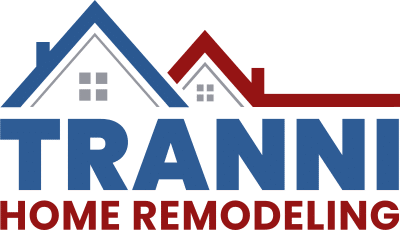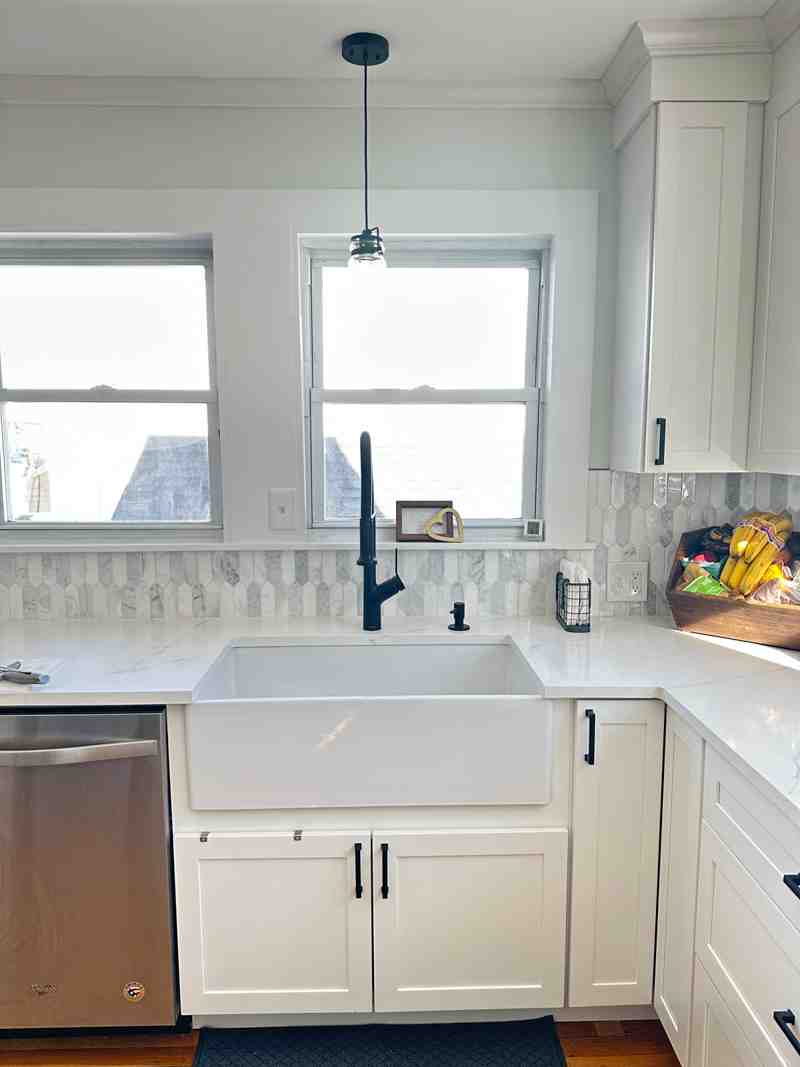Kitchen Cabinet Layout: Top 10 Expert Tips for 2024
Crafting the Perfect Kitchen Cabinet Layout: Tips and Tricks
A kitchen cabinet layout is the backbone of your kitchen’s design and functionality. It dictates where your appliances, work zones, and counter space will be, and whether you can fit seating into the room. Understanding the different kitchen layouts—like U-shaped, L-shaped, G-shaped, Galley, and Single Wall—can help you choose one that best suits your home’s needs and your lifestyle.
Quick Highlights:
- U-Shaped Kitchen Layout: Cabinets on three walls, lots of storage, great for multiple cooks.
- L-Shaped Kitchen Layout: Cabinets on two perpendicular walls, flexible, ideal for open floor plans.
- G-Shaped Kitchen Layout: Adds a peninsula to U-shape, maximizes space, suitable for larger kitchens.
- Galley Kitchen Layout: Cabinets on opposite walls, efficient for small spaces.
- Single-Wall Kitchen Layout: All cabinets and appliances along one wall, best for studio apartments.
I’m Tyler Tranni, and I’ve dedicated my career to changing houses into dream homes. With years of hands-on experience, especially in kitchen cabinet layout, I’m here to help you design a kitchen that’s both functional and stylish.

Quick kitchen cabinet layout terms:
– how to design a kitchen renovation
– kitchen layout ideas
Understanding Different Kitchen Layouts
Choosing the right kitchen layout is crucial. Let’s explore the five most common layouts: L-shaped, U-shaped, G-shaped, Galley, and Single-Wall. Each has unique advantages and can be custom to your needs.
L-Shaped Kitchen Layout
The L-shaped layout is a popular choice for many homes. It places cabinets along two perpendicular walls, forming an “L” shape.
Benefits:
– Flexible and Efficient: Works well in small to medium kitchens.
– Open Concept: Ideal for kitchens that open to dining or living rooms.
– Work Triangle: Efficiently creates a work triangle, with the sink, stove, and fridge arranged for easy movement.
Pro Tip: If you have space, add an island to improve counter space and provide seating.
U-Shaped Kitchen Layout
A U-shaped layout surrounds the cook with cabinets on three sides, leaving one side open.
Benefits:
– Ample Storage: More upper cabinets than other layouts.
– Multiple Work Zones: Ideal for larger kitchens, allowing multiple cooks to work without bumping into each other.
– Continuous Countertops: Great for extensive meal prep.
Pro Tip: If your kitchen is large enough, consider adding an island in the middle of the “U” for extra workspace and seating.
G-Shaped Kitchen Layout
The G-shaped layout is essentially a U-shaped kitchen with an added peninsula.
Benefits:
– Maximizes Space: Uses nearly every square foot of available floor space.
– Specialized Zones: Plenty of places to set up different work zones.
– Corner Storage Solutions: Features the most corner cabinets, which can be optimized with pull-out shelves and lazy Susans.
Pro Tip: Best for larger kitchens, as the narrower entrance can feel claustrophobic in smaller spaces.
Galley Kitchen Layout
Think of a galley kitchen as a hallway with cabinets on both sides.
Benefits:
– Compact Work Triangle: Everything is within close reach, making it efficient for cooking.
– Small Spaces: Ideal for smaller homes, apartments, and condos.
– Maximized Storage: Every inch of wall space is used for cabinets.
Pro Tip: Consider adding a pass-through to adjacent living areas to open up the space.
Single-Wall Kitchen Layout
A single-wall layout lines up all cabinets and appliances along one wall.
Benefits:
– Best for Small Spaces: Often the only choice for narrow or small areas.
– Affordable: Features the fewest number of cabinets, making it cost-effective.
– Open Concept: Pair with a central island to add functionality without cutting into traffic flow.
Pro Tip: Use a small table or island on casters to add counter space when needed.
Choosing the right layout can transform your kitchen into a functional and stylish space. Next, let’s dive into designing your kitchen cabinet layout.
Designing Your Kitchen Cabinet Layout
Designing your kitchen cabinet layout is about more than just looks. It’s about creating a space that works for you. Let’s explore how to create efficient work zones, maximize storage and counter space, and incorporate seating into your kitchen.
Creating Efficient Work Zones
Work zones are essential for a well-organized kitchen. Think about how you move when cooking. The ideal setup follows the work triangle principle: the sink, stove, and refrigerator should form a triangle for easy movement.
Appliance Placement:
– Sink: Place the sink centrally, often beneath a window for natural light.
– Stove: Position the stove near the sink but not next to the refrigerator.
– Refrigerator: Place the refrigerator at one end of the kitchen to keep it accessible without disrupting the cooking flow.
Workflow Tip: Group appliances and tools by task. For example, keep pots and pans near the stove and cutting boards near the prep area.
Maximizing Storage and Counter Space
Storage and counter space are critical for a functional kitchen. Here’s how to make the most of both:
Storage Solutions:
– Upper Cabinets: Use upper cabinets for items you don’t need daily. Consider glass doors to visually open up the space.
– Corner Cabinets: Use corner storage solutions like lazy Susans or pull-out shelves to make the most of awkward spaces.
– Pantry: If space allows, a pantry can keep your kitchen organized and clutter-free.
Counter Space:
– Continuous Countertops: In U-shaped and G-shaped layouts, continuous countertops offer ample prep space.
– Islands: Add an island if you have room. It provides extra counter space and can house additional storage or appliances.
– Peninsulas: Similar to islands but attached to a wall, peninsulas offer extra workspace and can help define the kitchen area.
Incorporating Seating in Your Kitchen
Seating can transform your kitchen into a social hub. Here are some ideas:
Kitchen Islands:
– Seating: Add bar stools to one side of the island for casual dining or a quick breakfast spot.
– Multi-Function: Islands can serve as prep areas, dining spaces, and even homework stations.
Peninsulas:
– Space-Saving: Peninsulas provide seating without taking up as much space as an island.
– Defined Zones: They can help separate the kitchen from the living or dining area, creating a natural flow.
Small Tables:
– Flexibility: A small table can offer additional seating and workspace. Look for tables on casters for easy movement.
By focusing on these elements, you can design a kitchen cabinet layout that’s both beautiful and functional. Next, we’ll dive into tips for organizing your kitchen cabinets.
Tips for Organizing Kitchen Cabinets
A well-organized kitchen makes cooking and cleaning more efficient and enjoyable. Let’s explore some practical tips for organizing your kitchen cabinets, including staggering items for easy access and grouping and labeling items.
Staggering Items for Easy Access
Staggering items in your cabinets ensures that everything is visible and easily accessible. Here’s how to do it:
-
Tallest to Shortest: Arrange items from tallest to shortest. Place taller items like cereal boxes or tall jars at the back and shorter items like spice jars or small containers in front. This way, you can see everything at a glance.
-
Visibility: Use clear containers or bins for items you use frequently. This not only makes it easier to find what you need but also helps you keep track of inventory.
-
Accessibility: Place everyday items on lower shelves where they are easy to reach. Reserve higher shelves for items you use less frequently.
Grouping and Labeling Items
Grouping similar items together and labeling them can save you time and keep your kitchen organized. Here’s how to do it effectively:
-
Grouping Items: Group items by category, such as baking supplies, snacks, or canned goods. Use bins or baskets to keep these groups together. For example, keep all baking ingredients in one bin and snacks in another. This makes it easy to find what you need without rummaging through multiple cabinets.
-
Labels: Label bins, containers, and shelves to quickly identify where items belong. You can use a label maker or simple sticky notes. Clear labeling helps everyone in the household know where to find and return items, keeping the kitchen tidy.
-
Bins: Use bins to contain small items that might otherwise get lost in the depths of your cabinets. For example, use a bin for packets of seasoning or small snack bags. Bins can also help contain spills and make cleaning easier.
By staggering items and grouping and labeling them, you can create a kitchen cabinet layout that is both organized and functional.
Next, let’s explore how technology can aid in designing your dream kitchen.
Using Technology for Kitchen Design
Designing your dream kitchen has never been easier, thanks to modern technology. From free kitchen design apps to virtual kitchen planners, you have a range of tools at your disposal to create the perfect kitchen layout.
Free Kitchen Design Apps
One of the most user-friendly tools available is Room Sketcher. This app is designed to help homeowners visualize their kitchen layout without needing any design experience.
-
Homeowner Friendly: Room Sketcher is intuitive and easy to use, making it accessible for anyone, regardless of their tech skills.
-
Design Experience: You can draw your floor plan, select a color palette, and choose from a variety of cabinets and appliances. The app even allows you to see your kitchen in 3D, giving you a realistic view of how your design will look.
Virtual Kitchen Planners
For those who want a more detailed and interactive experience, virtual kitchen planners are an excellent option. These tools offer more advanced features to help you refine every aspect of your kitchen design.
-
Virtual Kitchen Planner: This tool allows you to create a detailed floor plan and customize every element of your kitchen. You can adjust the placement of cabinets, appliances, and other features to see how different configurations will work in your space.
-
Floor Plan: With a virtual kitchen planner, you can freely design your kitchen’s floor plan, whether you’re planning a kitchenette, an L-shaped kitchen, a U-shaped kitchen, or even a G-shaped kitchen.
-
Color Palette: Customize the colors of your cabinets, walls, and countertops to match your vision. This feature helps you see how different color combinations will look together, ensuring your kitchen is both functional and aesthetically pleasing.
Using these tools, you can take the guesswork out of kitchen design and create a layout that meets your needs and style preferences. Next, we’ll answer some frequently asked questions about kitchen cabinet layout.
Frequently Asked Questions about Kitchen Cabinet Layout
What is the best layout for kitchen cabinets?
When it comes to kitchen cabinet layout, the L-shaped layout is often considered the best for several reasons. This layout, which places cabinets along two perpendicular walls, is both cost-effective and efficient.
- Cost-Effective: The L-shaped layout is typically more affordable because it requires fewer cabinets and countertops compared to more complex layouts.
- Efficient: It creates a natural work triangle, making it easier to move between your sink, stove, and refrigerator. This setup is ideal for both small and medium-sized kitchens and can even accommodate an island if space allows.
How should I organize kitchen cabinets?
Organizing kitchen cabinets can significantly improve your kitchen’s functionality. Here are some tips to keep everything in order:
- Stagger Items: Arrange items from tallest to shortest. This improves visibility and makes it easier to find what you need.
- Group Items: Keep similar items together. For example, store all your baking supplies in one cabinet and cooking utensils in another. Use bins to keep smaller items organized.
- Label Bins: Labeling helps you quickly identify where things are stored, making it easier to maintain organization.
Is there an app that lets me design my kitchen for free?
Yes, there are several free apps available that can help you design your kitchen. One of the most popular options is Room Sketcher.
- Room Sketcher: This app is very user-friendly and doesn’t require any design experience. You can draw your floor plan, choose a color palette, and select from various cabinets and appliances. The app even offers a 3D view to give you a realistic look at your design.
Using Room Sketcher, you can experiment with different kitchen layouts and see how they will look in your space, making it easier to create a kitchen that meets your needs and style preferences.
By understanding different layouts and using the right tools, you can craft a kitchen that is both beautiful and functional.
Conclusion
At Tranni Home Remodeling, we understand that the kitchen is the heart of your home. A well-designed kitchen not only improves your daily life but also adds value to your property. With over a decade of experience in kitchen renovation, we pride ourselves on delivering high-quality craftsmanship and outstanding service to homeowners in Billerica, MA, and surrounding areas.
Why Choose Tranni Home Remodeling?
1. Expertise in Kitchen Design:
Our team specializes in creating custom kitchen designs custom to your specific needs. Whether you prefer an L-shaped, U-shaped, G-shaped, galley, or single-wall layout, we have the expertise to bring your vision to life.
2. High-Quality Craftsmanship:
We use only the best materials and techniques to ensure your kitchen stands the test of time. From semi-custom cabinets to luxurious countertops, our focus is on quality and durability.
3. Outstanding Service:
Customer satisfaction is our top priority. We work closely with you from the initial consultation to the final installation, ensuring that every detail meets your expectations.
4. Comprehensive Solutions:
From minor updates to full-scale renovations, we offer a range of services to meet your needs. Our skilled designers and contractors are here to guide you through every step of the process, making your kitchen renovation as seamless as possible.
5. Budget-Friendly Options:
We understand that a kitchen remodel is a significant investment. That’s why we offer various options to fit different budgets without compromising on quality. Our goal is to provide you with a beautiful and functional kitchen that you will love for years to come.
Ready to start your kitchen renovation journey? Visit our Kitchen Remodeling page to learn more about our services and how we can help you design the kitchen of your dreams.
By choosing Tranni Home Remodeling, you’re not just getting a new kitchen; you’re investing in a space that will improve your lifestyle and bring joy to your home. Contact us today to take the first step towards crafting your dream kitchen.



